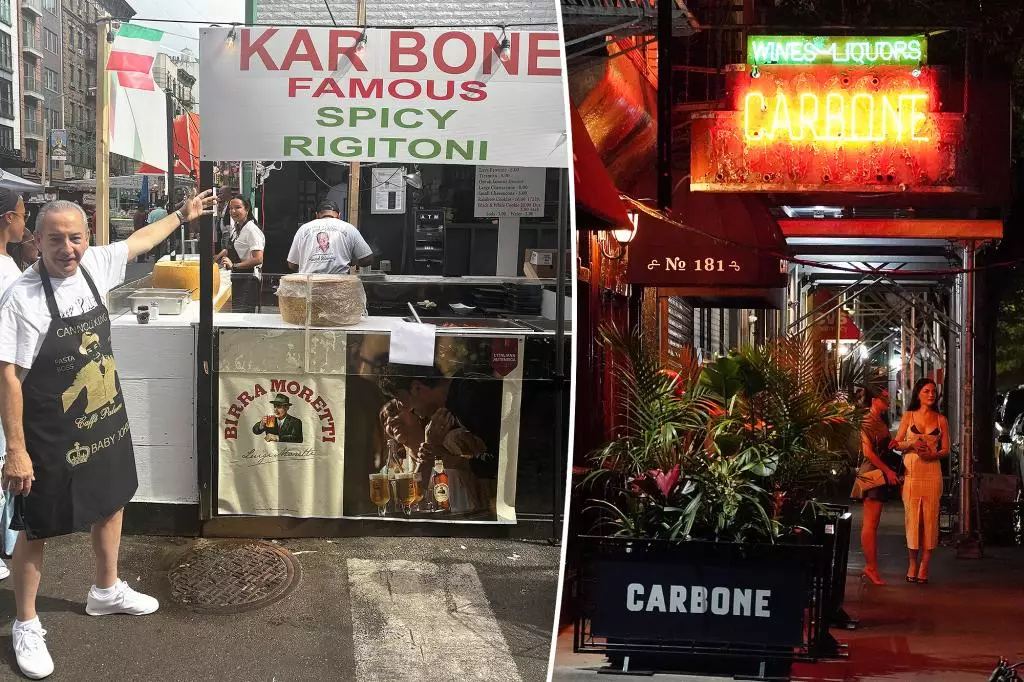In an era where culinary establishments vie for attention, John “Baby John” DeLutro, affectionately dubbed the “Cannoli King,” has made headlines with his audacious strategy in Little Italy. Drawing inspiration from the acclaim of the renowned pasta restaurant Carbone in Greenwich Village, DeLutro aims to capture a slice of the limelight with a rather unconventional marketing approach. During the Feast of San Gennaro, an annual street festival celebrating Italian heritage and cuisine, he has boldly advertised his dish as “KAR BONE FAMOUS SPICY RIGITONI”—a name that playfully riffs on Carbone’s success while sparking curiosity among festival-goers.
The culinary world often navigates a fine line between inspiration and imitation, and DeLutro’s gambit raises questions about the legalities of branding. He claims to be on solid legal ground, likening his name swap to a previous case where a competitor used a phonetic twist for cannoli. DeLutro’s logic here underscores a burgeoning trend in the food industry: the creative use of language and branding to stimulate interest. With a wink, he misspelled “rigatoni,” perhaps as a clever nod to the carnal joy of his pasta-making prowess, and insists that this light-hearted tweak is far from being offensive or damaging to the Carbone brand.
Stepping beyond mere marketing, DeLutro’s assertion that he creates a superior version of spicy rigatoni serves to highlight a vital aspect of culinary culture—the competitive spirit between chefs. This bravado not only reflects his confidence in his craft but also speaks to the neighborhood’s dynamic dining scene. Little Italy often prides itself on heritage recipes and traditional value, yet it also showcases the innovations of its restaurateurs. By claiming that he can outshine a celebrated establishment like Carbone, DeLutro draws attention to the heart of what makes culinary arts so vibrant—passion and high stakes.
DeLutro’s ultimate goal seems to lie in appealing to the throngs of tourists who flock to the area during the San Gennaro festival. He hopes that familiar names and foods will strike a chord with visitors who crave authentic Italian experiences. It’s a savvy move designed to benefit from Carbone’s established reputation, serving not only to elevate his own brand but also to engage a demographic frequently overlooked by more established restaurants. His assertions are rooted in a desire for camaraderie rather than animosity, emphasizing the importance of community in the culinary landscape.
As the Feast of San Gennaro unfolds, the potential for conflict remains a shadow beside the vibrancy of festivities. DeLutro embodying the archetype of a passionate purveyor of Italian cuisine speaks volumes about the evolving nature of restaurant branding in New York City. While some may consider his name choice risky, it is undeniably a bold play in a competitive marketplace where clever marketing can make or break a food venture. His lighthearted acknowledgment that his approach is meant to be “in good fun” reminds us that at the end of the day, food—and the joy it brings—remains the heart of any culinary endeavor.


Leave a Reply